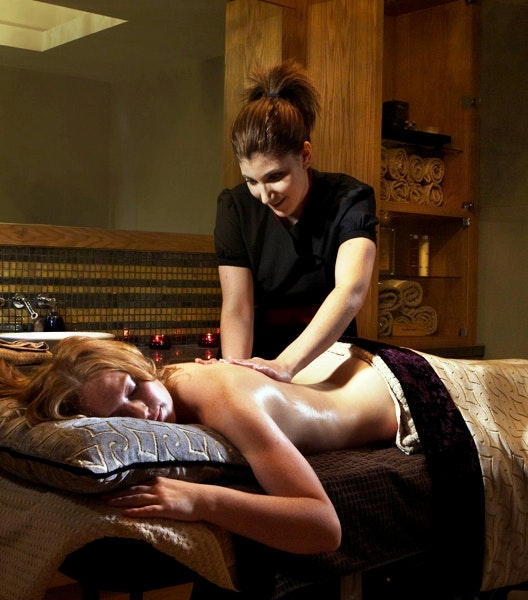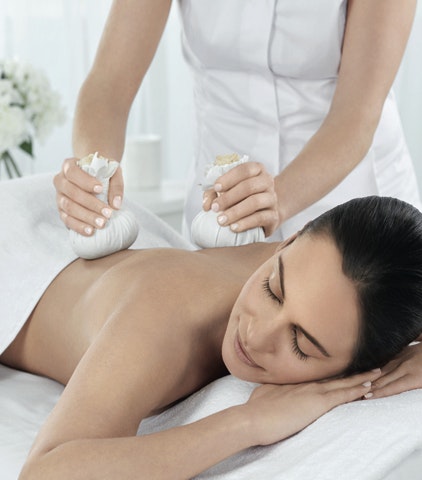
Skincare Starter Guide: What Are Alpha-Hydroxy Acids?
AHAs, or alpha-hydroxy acids, are one of those ingredients that often boldly appear on skincare packaging. With good reason – they work wonders on your skin. But when it comes to acids in skincare, it’s best to know your stuff so you can make sure you’re using the right ingredients at the right strengths for your skin.

What are AHAs?
AHAs are a group of chemical compounds – some natural and some synthetically produced – that are known to have powerful effects on the skin. They essentially work as a natural chemical exfoliator, dissolving the dead skin cells that accumulate on top of the skin’s surface, which can bind with dirt and oil to clog pores, or just leave your complexion looking dull.
Removing this surplus layer not only makes your skin look brighter and gives it a thorough clean, it also helps the active ingredients of a mask or a serum reach the layers of your skin where they’ll actually work.
There are several types, each with their own properties and effects on skin. Glycolic and Lactic Acids are the two most commonly found as active ingredients in skincare, and more research has been done into the skincare effects of these than other types of AHA. Other types of AHA include Citric, Mandelic, Malic and Tartaric Acid, however, these are used less frequently and don't have the same powerful benefits.
Glycolic Acid
Glycolic Acid is used a lot – some experts have dubbed it the ‘gold standard’ when it comes to AHAs in skincare. It comes from sugarcane, and its molecules are smaller than those in other types of AHA, which allows it to reach deeper layers of the skin to help stimulate cell turnover. Using it regularly can make your skin more sensitive to the effects of UV rays, so it’s important to wear a good quality SPF everyday for protection.
Who’s it for? Glycolic Acid has many benefits, but it’s particularly useful for more mature skins looking to counteract the signs of ageing in the skin, and even out skin tone.
Lactic Acid
Lactic Acid is another popular AHA. With slightly larger molecules than Glycol, it doesn’t penetrate the skin in the same way, but does most of its work on the skin’s surface by breaking up the dull, dead skin cells to reveal the fresher, younger skin underneath. It doesn’t thin the skin in the same way Glycol Acid does, which means it won’t increase your sensitivity to sun damage in the same way.
Who’s it for? Lactic Acid is a more gentle exfoliator for sensitive skin types than other AHAs, and because it clears the skin surface of dead cells, it’s great on problem skins prone to breakouts or acne.
Citric Acid
You might often see Citric Acid listed as an ingredient in a skincare product, however that doesn’t always mean it’s an active ingredient (meaning it’s in a high enough concentration to have an effect on skin. It’s often used as a preservative or to balance the pH of a product, so unless it’s listed on the front as an active component, the product probably doesn’t have much Citric Acid in the formula. At a high enough concentration, it helps to reverse the effects of sun damage on the skin.
How to get AHAs in to my skincare routine
There is a wealth of products available that contain alpha-hydroxy acids, making it quite straightforward to get them all into your skincare routine. The important thing to bear in mind when using AHAs in your skincare is the concentration that you’re applying to skin.
Products you can buy in-store or online tend to have lower concentrations, while peels containing high doses can only be applied and sold by skin care professionals.
In a cleanser
There are many Glycolic or Lactic Acid cleaners on the market. However despite the name, they’re usually best used in the same way you’d use an exfoliating treatment – i.e. once a week – rather than twice a day as you would usually cleanse your skin. A great way to prep skin before a mask treatment.
In a serum
Serums are a good way to get powerful AHAs into your routine on a regular basis. Depending on which AHA you’re using and your skin type, you might want to switch between an AHA serum and something that’s simply hydrating, using your AHA product only in the evenings, or even every other day or so.
In a peel
For something a bit harder hitting, a professional peel treatment can have powerful effects on different skin conditions or complaints, from severe acne to lines and wrinkles. Acid peels sound scary, but most formulations have developed to treat skin without leaving you looking red and raw. Your therapist might recommend a course of several peels or just a one-off to help restore your skin.
Alpha-hydroxy acid skincare: best spa buys
Dermalogica Gentle Cream Exfoliant, £39.50
Containing lactic acid for a gentle and non-abrasive regular treatment to rid the skin of dull dead cells.
Murad AHA/BHA Exfoliating Cleaner, £35
Murad’s cleaner contains the ultimate trinity of skincare acids: glycolic and lactic AHAs as well as salicylic acid, which is great for targeting breakouts. Use regularly for restored, brighter skin.
Elemis Dynamic Resurfacing Serum, £85
Elemis’s award-winning serum features lactic acid along with other AHAs and combined with natural enzymes to a create a formula that has powerful skin resurfacing properties while still being gentle.




